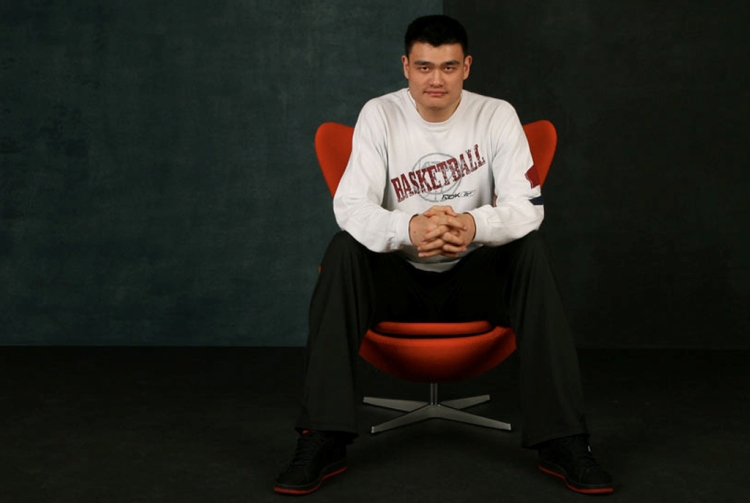When you’re the daughter one of France’s most lauded chefs - the late, great Jacques Pic - it must be intimidating taking over his kitchen… especially after losing a Michelin star he had held since 1973. Yet this is how Anne Sophie Pic entered the culinary scene in 1997 at age 28. Soon enough, however, the third-generation chef was forging her own path with innovative flavors at La Maison Pic, the family restaurant in Valence. And in 2007 she regained that third Michelin star - making her the first woman in France to do so, and one of only four women to hold three the world. We met the queen of cuisine to discuss gender issues, cooking at Cannes and a few of her favorite things ahead of her visit to Shanghai and the Masters of Food and Wine event at the Park Hyatt.
After your father died, what was it like to try and take the culinary reins of La Maison Pic?
There was real pressure. My brother and I weren’t ready to handle it and had to adapt. When we reorganized the restaurant and I became chef, I was a bit confused and lost. But I’ve always been determined. That part of my personality gave me the strength to face the difficulties, and I worked hard to get into the kitchen. The world of gastronomy is very masculine. I had to fight to enter it, but I had the support of my mother and my husband.
You are, time and again, described as soft and shy (though determined) – do you think this is an accurate description?
I would describe myself as soft and shy; I’ve always been a discreet person. But to get where I am, especially for a woman, you obviously need to be passionate. When I first entered a kitchen as a chef, I didn’t try to be someone else. I couldn’t imagine working in a noisy place, where you have to shout to be heard. Naturally, I imposed a quiet ambiance, so everyone can work peacefully.
In my dishes, you can also see these parts of my personality: the colors and the presentation are really gentle - but in each bite, you discover a succession of flavors: sweet, strong, bitter, acidic… and I play with textures so that you experience all kind of evanescence; clouds that temper strength, emulsions that bring roundness and sweetness without ever succumbing to preciousness.
Your restaurant website advertises that you create dishes with a “feminine taste.” Can you explain what this means?
I don’t want to make a rift between men and women in gastronomy. As a woman, my cuisine has always been tagged as feminine because of the lightness and refinement. In fact, what is meant in this phrase is that I care a lot about the sweetness of a dish and also fine presentation. But I really think the differences between the approaches of gastronomy are not due to gender but to sensitivity and I mostly notice differences between generations or regions.
Do you get sick of your gender being a topic of discussion?
I am starting to be fed up by this constant comparison between me and the men, or being reduced as a woman. I’d really like to change the topic of discussion and the mentality. I regained the three stars in 2007. I think I have the same legitimacy as all the others - who don’t have to explain what it is like to be a man in a kitchen or to define a masculine cuisine!
In my mind, it’s important to mix men and women in a kitchen. They are complementary, not opposed. But I am optimistic and I’m sure that this change is coming as more and more women assume the role of chef.
You seem to use coffee a lot in your menus in rather untraditional ways – what is it you like about this flavoring and what kind of beans are your favorite?
I love working with coffee - even though I don’t drink it. I use it to season beetroot or melon as a starter, to enhance the lobster, to give a smoky flavor to a piece of Black Angus beef, or to raspberries in a Vacherin for dessert. I have no limit with this ingredient, but the quality is very important. I only use Blue Mountain coffee from Jamaica or Bourbon Pointu from Réunion.
Cinnamon leaf versus cinnamon bark – explain the differences in flavor and why you often use the former?
It’s totally different! Cinnamon bark is a spice, with a very strong flavor and a peppery aftertaste. It is very present in a dish and covers other flavors. I have to admit that I have never liked it, especially when I was a child.
But cinnamon leaf is subtle; its flavor is fresh and tastes like licorice. It’s an aromatic herb that goes along very well with fish and seafood. At the moment, I am creating langoustine fried with butter and seasoned with a light green apple broth, cinnamon leaf, green anise and celery.
What is your favorite ingredient or method of cooking?
The butter is the base of all my cuisine; I use it to cook a meat or a fish, but most of all to thicken sauces. It enhances all flavors. If you use it sparingly, your dish becomes soft and light, with many facets.
At your restaurant in Paris, La Dame de Pic, you worked with Philippe Bousseton of scent company Takasago to design perfumes based on pairings in your menu – how did you come up with this idea, and why?
When I imagined my restaurant in Paris, I wanted to create a concept that hadn’t been seen before. Philippe and I were introduced at this time and we started to share our close experiences in our job. Creating a dish or imagining a fragrance follows the same approach. Philippe is gourmet and I love perfumes: it was obvious for both to collaborate.
We put together three menus, inspired by three perfumes. At the beginning people were a bit confused as to how to choose a meal [people had to sniff different scents before ordering]. But as these are perfumes based on my ingredients and dishes (really not fragrances you could wear), they illustrate perfectly what you will get.
You catered dinner for the 2013 Cannes Film Festival. What was it like to cook for the stars and how did you choose the menu?
It was an honor to be chosen to cook for all these famous people, especially for the opening gala! What I would retain though is the stress you get from cooking for so many… everything has to be as perfect as possible, but you’re not in your kitchen, you’re in a tent and the conditions were extreme! At the end, everybody liked the meal: runny green peas and white cream of sweet onions and bergamot as a starter and white sea-bass cooked with rhubarb and celery, light green apple broth, cinnamon leaf and green anise as the main course. We were so close to the sea, I wanted to propose a local fish.
What movie star/movie director were you most impressed by?
When the dinner ended, I had the occasion to meet the jury, and I was very impressed by their simplicity and kindness, especially Steven Spielberg and Christoph Waltz. I also met Audrey Tautou, who was just sublime….
You told the Wall Street Journal that you often devise new recipes starting with your mind. Where do you do your thinking and how do you clear your mind?
All the creations for my three restaurants are concentrated in Valence. For the moment, I make tests at my school. Starting this January, I will begin a huge restoration of the kitchen at La Maison Pic to create a laboratory where I can work on my menus. To imagine the dishes, I need to have a very close team with me; we taste, we talk, we try different combinations. But to be as concentrated and focused as possible, I really need a quiet place outside my kitchen.
You always keep your father’s sea bass with caviar on the menu. Why this particular dish out of all of his famous ones?
The sea bass with caviar, which my father invented in 1971, is one of the finest dishes you can find on the menu. It transcends time. It was very modern in its original version, very purist and he was the first to use caviar this way. I just lightened the sauce and reduced cooking time (we used to cook stronger forty years ago). It was important to me to make a tribute to him.
What are your plans for cooking in Shanghai this month?
This is the first time that I will cook for Shanghainese people, and I’m honored. I’m getting to know the taste of Chinese clients because I receive them sometimes at our restaurant in Valence, but most of all in Lausanne and Paris. I inquired about the tastes and preferences of Chinese gourmets, because I do not want to use ingredients they don’t like or that they are not used to eating. But I can see that most of the Chinese clients who come to us are very open to French gastronomy and enjoy it and I will, of course, cook signature dishes from my kitchen this month.
During my journey, I also look forward to discovering new products and to improving my knowledge of Chinese tea, which I appreciate particularly.
What have been the biggest challenges you have faced in your career?
I have faced two challenges that influenced my entire life: the day I took the lead of the kitchen at La Maison Pic and the birth of my son. These two huge events determined who I am today. They influenced me as a cook, as a woman and as a person. Both remind me of my roots and my heritage, but also encourage me to move forward and question myself every day.
// Anne Sophie Pic will be cooking for the Masters of Food and Wine program at the Park Hyatt on Nov 29, 7-10pm. RMB4,888/person gets you one of only 80 seats at the coveted table. The Loft, 93/F, Park Hyatt Shanghai, 100 Century Avenue, by Dongtai Lu 世纪大道100号93楼, 近东台路 (6888 1234 ext 4559, hotelfbreservation.shaph@hyatt.com)





















0 User Comments